i bc27f85be50b71b1 (102 page)
Read i bc27f85be50b71b1 Online
Authors: Unknown

Lung
Heavy smoker, older than age 40 yrs
Smoked one pack per day for 20 yrs
Started smoking at age 15 or before
Smoker working with or near asbestos
Breast
Lump in breast
Nipple discharge
History of breast cancer
Filmily history of breast cancer
Benign breast disease
High-far diet
Nulliparous or first child after age 30 yrs
Early menarche or menopause
Colon/rectum
Hiscocy of rectal polyps or colonic adenomatosis
Family histOry of rectal polyps
Ulcerative colitis or Crohn's disease
Obesity
Increasing age
Uterine
Unusual vaginal blood or discharge
History of menstrual irregularity
Late menopause
Nullipariry
Infertility through anovulation
Diabetes, hypertension, and obesity
Age 50-64 yrs
Skin
Excessive exposure to the Slin
Fair complexion that burns easily
Presence of congenital moles or hisCOfY of dysplastic nevi or
cutaneous melanoma
Family history of melanoma
Oral
Heavy smoker and alcohol drinker
Poor oral hygiene
Long-term exposure to rhe sun, particularly to the lips
Ovary
Hiscocy of ovarian cancer among close relatives
Nulliparity or delayed age at first pregnancy
Age 50-59 yrs


336
ACUTE CARE HANDBOOK FOR PHYSICAL THERAPISTS
Table 5-3. Continued
Cancer Sire
High-Risk Factors
Prosrare
Increasing age
Occuparions relaring to the use of cadmium
Family hisrory
Sromach
Hisrory of sromach cancer among close relarives
Dier heavy in smoked, pickled, or salred foods
Source: Wirh permission from S Baird (ed). A Cancer Source Book for Nurses (6rh ed).
Arbma: American Cancer Society, 1991 ;32.
Para neoplastic syndromes are symptoms that cannot be related
directly to the cancer's growth and invasion of tissues. They are
thought to be due to abnormal hormonal secretions by the tumor. The
syndromes are present in approximately 15% of persons diagnosed
with cancer and often are the first sign of malignancy. Clinical findings are similar to endocrinopathies (Cushing's syndrome, hypoglycemia), nerve and muscle syndromes (myasthenia), dermatologic disorders (dermatomyositis), vascular and hematologic disorders
(venous thrombosis, anemia), and others,l.7
Diagnosis
After obtaining a medical history and performing a physical examination, the physician uses specific medical tests to diagnose cancer.
These teStS may include medical imaging, blood tests for cancer markers, and several types of biopsy. Biopsy, or removal and examination of tissue, is the definitive test for cancer identification. Table 5-4 lists
common medical tests used to diagnose cancer.
Staging and Grading
After the diagnosis of cancer is established, staging is performed to
describe the location and size of the primary site of the rumor, the
extent of lymph node involvement, and the presence or absence of
metastasis. Staging helps to determine treatment options, predict life
expectancy, and determine prognosis for complete resolurion.



ONCOLOGY 337
Table 5-4. Diagnostic Tests for Cancer
Test
Description
Biopsy
Tissue is taken via incision, needle, aspirarion procedures. A pathologist examines the tissue (Q identify
the presence or absence of cancer cells; if cancer is
presem, the rUlllor is determined to be benign or
malignanr. The cell or tissue of origin, staging, and
grading arc also performed.
Blood rests
Blood can be assessed for the presence or absence of
rumor markers:
Marker
Cancer
Prostate surface amigen
Prostate disease
Carcinocmbryonic
Colon cancer
antigen
Prostaric-acid
Prosrate cancer
phosphatase
Alpha-fcroprorein
Liver cell cancer
CAI2S
Ovarian cancer
CA 19-9
Colon cancer
CAU-3
Stool guaiac
Srool guaiac
Detecrs small quantities of blood in srool.
Sigmoidoscopy
The sigmoid colon is examined with a sigmoidoscope.
Colonoscop}'
The upper porrion of the rectum is examined wirh a
colonoscope.
Mammography
A radiographic method is used to look for a mass or
calcification in breast tissue.
Radiography
X-ray is used ro detect a mass.
Magnetic resonance
These noninvasive imaging techniques are used to
imaging and
assess lesions suspected of being cancerous.
computerized
axial romography
Bone scan
Radionuclide imaging used to detect rhe presence,
amOunt of metastatic disease, or both in bones.
Pap smear
A type of biopsy in which cells from the cervix are
removed and examined.
Sputum cytology
A sputum specimen is inspected for cancerous cells.
Bronchoscopy
A tissue or sputum sample can be taken by rigid or
flexible bronchoscopy.
CA c:trboh),dratc :tntigcn.
=


338
ACUTE CARE HANDBOOK FOR PHYSICAL THERAPISTS
The mostly commonly used method to stage cancer is the TNM
system. Tumors are classified according to the American Joint Committee on Cancer using this system based on the size of the primary tumor (T), presence or absence of tumor in local lymph nodes (N),
and presence or absence of metastasis (M) (Table 5-5).'
Grading reports the degree of dysplasia, or differentiation, from the
original cell type. The higher the grade, the greater the differentiation, or
appearance, from the original cell. In some cases, tumor cells may look so
unlike any normal cell that no cell of origin can be determined. Higher
degree of differentiation is linked to aggressive, fatal tU1110rs (Table 5-6).'
Management
Not all cancers are curable. Physicians may therefore foclls treatment
on quality of life with palliative therapies rather than on curative
therapies. Four major treatment options include:
• Surgical removal of the tumor
• Radiation to destroy or shrink the tumor
•
Chemothera py
•
Biotherapy (including immunotherapy, hormonal therapy, bone
marrow transplantation, and monoclonal antibodies)
Table 5-5. TNM System
T: Primary rumor
TX: Primary tumor cannot be assessed.
TO: No evidence of primary rumor.